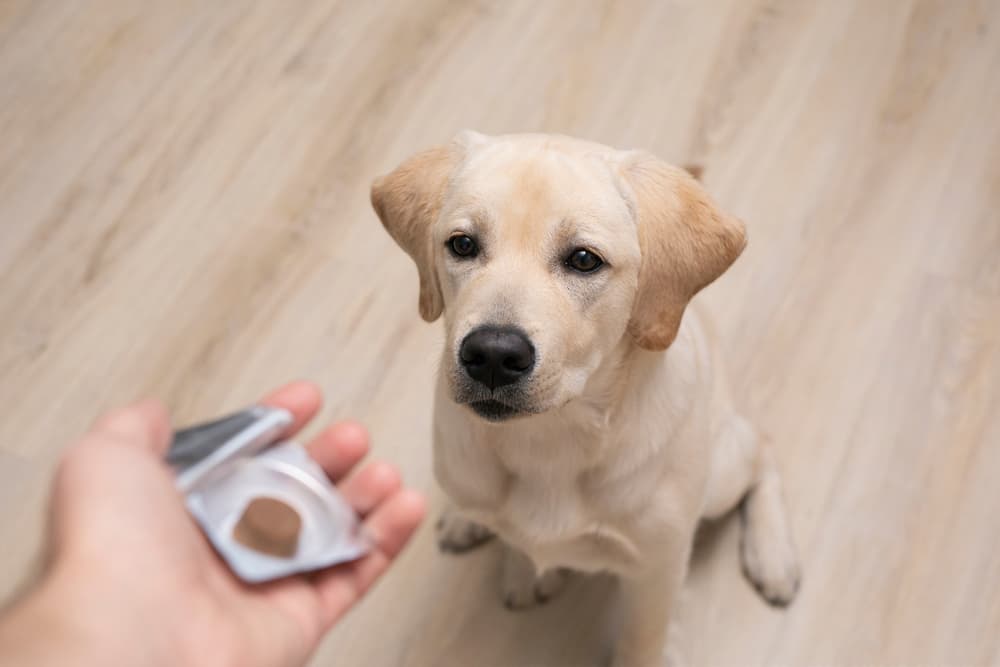6 Dog Skin Conditions You Should Know About

If you share your home and life with a dog, there’s a good chance you may encounter a canine skin condition. Whether it’s itching or hair loss or anything in between, skin problems are one of the most common reasons dogs are brought to the veterinary clinic every year.
Being aware of the signs of skin problems in dogs is the first step to ensuring your pup gets the care he needs if one of these issues arises.
Dog Skin: Understanding the Basics
 The skin is the largest organ of the body and serves as a protective barrier against the outside world. A dog’s skin is composed of three layers: the epidermis, which is the outermost layer; the dermis, which contains the blood vessels and skin appendages such as sweat glands; and the subcutis, which contains the subcutaneous fat and muscles. When this barrier becomes disrupted, problems such as inflammation and infection can occur.
The skin is the largest organ of the body and serves as a protective barrier against the outside world. A dog’s skin is composed of three layers: the epidermis, which is the outermost layer; the dermis, which contains the blood vessels and skin appendages such as sweat glands; and the subcutis, which contains the subcutaneous fat and muscles. When this barrier becomes disrupted, problems such as inflammation and infection can occur.
Causes of Dog Skin Conditions

Skin conditions in dogs are rarely isolated incidents. They often occur due to an underlying medical issue, such as:
- Adverse food reactions
- Environmental allergies
- Bacterial or fungal infections
- Parasites
- Endocrine (hormonal) conditions
- Genetics
Many of these underlying conditions can be identified and managed, so it’s important to see your veterinarian to have the problem diagnosed and treated.
However, in some cases—such as genetics—the underlying cause cannot be treated or cured. But veterinarians can help you manage the symptoms to make your dog comfortable.
Signs of Dog Skin Problems

Dog skin problems often look alike, even when the underlying causes are very different. So it’s important to see your veterinarian for an accurate diagnosis of the problem.
Common symptoms of skin problems in dogs can include:
- Itching
- Licking, biting, and chewing
- Pustules, pimples, or bumps
- Redness
- Crusting
- Flaking
- Hair loss
- Scabbing
- Odor
- Discoloration
If you notice these symptoms or any other changes in your dog’s skin, it is best to see your veterinarian for a check-up to determine the source of your dog’s skin condition.
6 Common Dog Skin Conditions

- Allergies
- Skin Infections
- Hot Spots
- Parasites
- Skin Tumors
- Calluses
There are a number of different skin conditions that can plague our canine friends and unfortunately they can all look very similar despite being treated very differently by your veterinarian.
Below are just six of the most common skin conditions in dogs to watch out for with your pup.
Allergies
Like humans, dogs can be allergic to certain foods or factors in their environment. Dog allergies often show up as itching, rashes, hives, and chronic ear infections.
Treating allergies in dogs often requires identifying the cause of the allergy and managing it as much as possible. Medications to combat itching due to allergies may also help keep your dog comfortable and reduce secondary skin infections.
Skin Infections
Rashes, pustules, crusting, and other skin irritations are often caused by bacterial and fungal infections of the skin. These infections are usually made worse when your dog begins scratching, licking, or chewing the affected area, causing even more moisture and bacterial growth.
Skin infections are often diagnosed by taking samples from the skin and examining them under a microscope. Depending on the type of infection, your veterinarian may prescribe a medicated shampoo, antibiotics, or an antifungal or anti-inflammation medication—or a combination of these treatments—to relieve your dog’s infection.
Hot Spots
A hot spot, also known as acute moist dermatitis, is a dog skin infection that is localized to one area. It appears as a red, inflamed area of the skin, often spreading quickly and discharging pus. Hot spots can occur due to moisture being trapped against the skin. This may happen after swimming or due to an underlying allergy or parasite infection.
A hot spot is often easily diagnosed by its characteristic appearance. It is typically treated by shaving the hair around the area to help dry the skin. Depending on the severity of the infection, your veterinarian may also prescribe topical or oral antibiotics to treat the infection.
Parasites
Parasites, particularly fleas, are a common cause of skin problems in dogs. Parasite infections often result in hair loss, scabbing, redness, and severe itching. It’s important to remember that even if you don’t see parasites, your pet could still have them. Some mites are invisible to the naked eye and must be diagnosed using a microscope, and fleas may also be difficult to see if your dog’s coat is dark or thick.
Fortunately, many parasite infections can be treated using prescription medication from your veterinarian. Your veterinarian can also teach you how to clean your pet’s environment to remove parasites and prevent re-infection. A monthly flea and tick preventative can help your dog avoid some of the skin problems and discomfort due to parasites.
Skin Tumors and Growths
Tumors of the skin and subcutaneous tissue are common in dogs, especially in their senior years. These may show up as lumps or bumps on your dog’s skin—which may be small or large in size. Some tumors are benign, or non-cancerous (such as warts, cysts, or lipomas), while others may be malignant, or cancerous. Unfortunately, it’s impossible to tell just by looking at a tumor whether or not it is cancerous.
Your veterinarian will need to take some samples of the tumor, such as by fine needle aspirate, biopsy, or by removing the tumor entirely and submitting it to a laboratory for analysis. In some cases, removing the tumor is curative. In others, additional treatments such as radiation or chemotherapy may be necessary. Your veterinarian is your best resource to advise you on your treatment options and the best course of action for your dog’s needs.
Calluses
Calluses are areas of thickened, hairless skin that often occur over pressure points such as the joints, particularly in large and heavy dogs that like to lay on hard surfaces. They most commonly occur at the elbows, but may affect other joints as well. Although calluses look unsightly, they are generally harmless.
Occasionally, some dogs may experience infections called callus pyoderma, which can cause inflammation and discomfort. If this occurs, your veterinarian may recommend treatment with antibiotics. You can also purchase padding to protect your dog’s elbows and reduce the calluses.
Treating Dog Skin Conditions

Most skin conditions look alike, but they are treated differently. It is very important to have the problem appropriately diagnosed to get to the root of the problem as quickly as possible.
Remember to never give your dog any over-the-counter medications or any medications not specifically prescribed for your pet, as these may be unsafe for your dog.
Common treatments for dog skin conditions include:
- Topical or oral antibiotics
- Anti-inflammatory medications
- Antihistamine medications
- Antifungal medication
- Medicated shampoos
- Radiation or chemotherapy
- Surgery
Always consult your veterinarian first before attempting to treat any health concerns at home.
Dog Skin Care: How to Stay Ahead of Problems

Preventing skin problems in your dog starts with taking your dog to the vet regularly for annual examinations and routine preventive care. This ensures any potential problems are caught and treated early, before they become bigger problems.
Keeping your dog up-to-date on flea and tick prevention is essential to prevent parasite infections including fleas and mites. For long-haired or thick-coated breeds, regular grooming is also recommended to help prevent mats and tangles in the coat that can put your pet at risk of skin problems.









